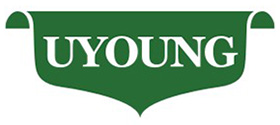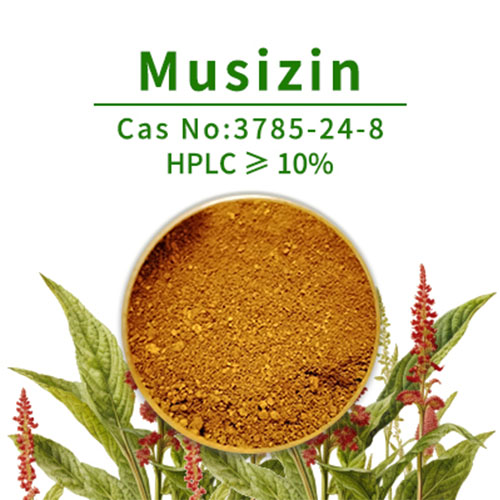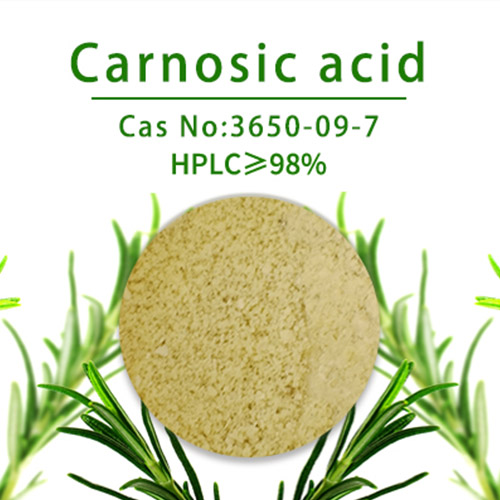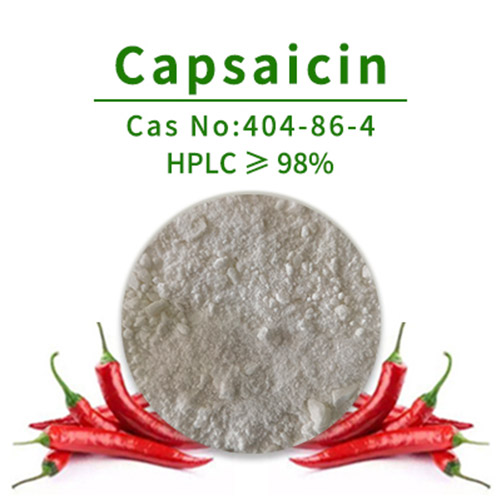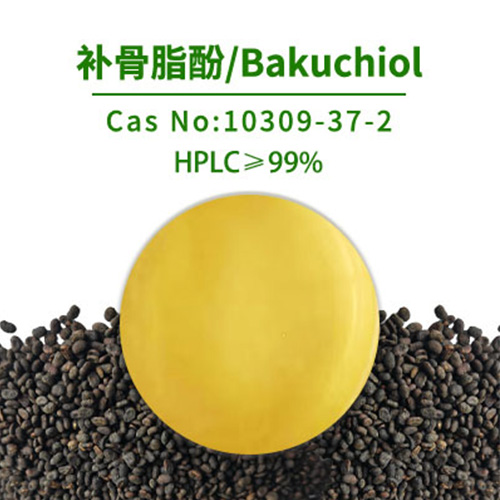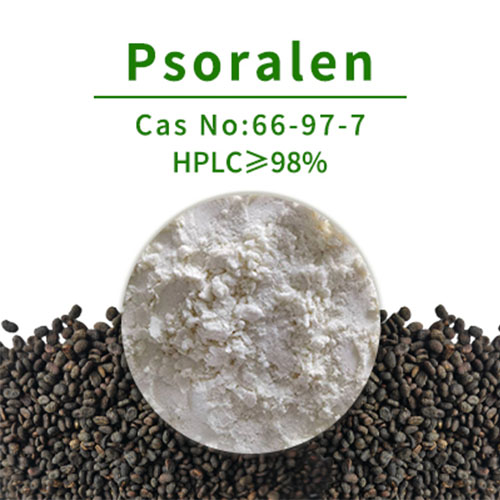Psoralen is a naturally occurring compound found in several plants, including the Babchi plant (Psoralea corylifolia), and has been recognized for its potent effects in medical and dermatological treatments. As an efficacy ingredient, Psoralen plays a crucial role in therapies such as phototherapy for skin disorders, and it has unique properties that make it effective in various applications. This article delves into the functions of Psoralen, exploring its mechanisms, benefits, risks, and its significance in modern medicine and skincare.
1. Introduction to Psoralen
Psoralen is a furanocoumarin, a class of organic compounds found in a variety of plants. Historically, Psoralen has been used in traditional medicine, particularly in Ayurveda and Chinese medicine, for treating skin conditions like vitiligo and psoriasis. However, it wasn’t until the 20th century that its functions as a therapeutic agent were scientifically understood and harnessed in modern medicine.
The primary interest in Psoralen stems from its ability to interact with DNA when exposed to ultraviolet A (UVA) light. This unique property makes Psoralen a powerful tool in the treatment of certain skin disorders, particularly through a therapy known as PUVA (Psoralen + UVA). Additionally, Psoralen’s ability to inhibit rapid cell proliferation and its photochemotherapeutic properties have broadened its use in dermatology.
2. Function 1: Psoralen as a Phototherapy Agent
One of the most well-known and widely used functions of Psoralen is its role as a phototherapy agent in the treatment of skin disorders. This application is most prominently seen in PUVA therapy, which combines Psoralen with UVA light to treat conditions such as psoriasis, vitiligo, and eczema.
Mechanism of Action in Phototherapy:
The therapeutic effects of Psoralen in phototherapy arise from its ability to sensitize the skin to UVA light. When Psoralen is ingested orally or applied topically, it gets absorbed into the skin cells. Upon exposure to UVA light, Psoralen molecules intercalate with the DNA of skin cells. This intercalation involves the insertion of Psoralen molecules between the base pairs of DNA strands, forming covalent bonds with pyrimidine bases upon activation by UVA light.
This interaction between Psoralen and DNA leads to the formation of cross-links between DNA strands, inhibiting DNA replication and transcription. This inhibition slows down the proliferation of skin cells, which is particularly beneficial in conditions like psoriasis, where skin cells multiply rapidly. By reducing the rate of cell division, PUVA therapy helps to control and manage the symptoms of these skin disorders.
Clinical Applications:
- Psoriasis:
- Psoriasis is characterized by the rapid proliferation of skin cells, leading to thick, scaly patches on the skin. PUVA therapy using Psoralen is highly effective in managing moderate to severe cases of psoriasis. By inhibiting DNA synthesis and cell division, Psoralen helps reduce the thickness of psoriatic plaques and alleviates the associated symptoms, such as itching and inflammation.
- Vitiligo:
- Vitiligo is a condition in which the skin loses its pigment cells, leading to white patches on the skin. PUVA therapy with Psoralen stimulates the remaining melanocytes (pigment-producing cells) in the skin, encouraging repigmentation. Psoralen’s ability to enhance the skin’s sensitivity to UVA light allows for more effective stimulation of melanocytes, helping to restore pigment in affected areas.
- Eczema:
- Although less common, PUVA therapy is sometimes used to treat severe cases of eczema, particularly when other treatments have failed. By reducing inflammation and suppressing immune responses in the skin, Psoralen helps to manage chronic eczema symptoms, leading to improved skin appearance and comfort.
- Cutaneous T-cell Lymphoma:
- PUVA therapy is also used in the treatment of early-stage cutaneous T-cell lymphoma, a rare type of skin cancer. Psoralen’s ability to target rapidly dividing cells makes it effective in controlling the growth of malignant cells in this condition.
Advantages and Limitations:
The primary advantage of Psoralen in phototherapy is its effectiveness in treating stubborn skin disorders that do not respond well to other treatments. PUVA therapy offers significant relief for patients with conditions like psoriasis and vitiligo, often leading to long-lasting improvements.
However, Psoralen’s use in phototherapy is not without limitations. The treatment requires careful monitoring due to the potential side effects, including phototoxic reactions, skin aging, and an increased risk of skin cancer with prolonged use. Additionally, the therapy necessitates strict adherence to treatment schedules, as irregular application can reduce efficacy and increase the risk of side effects.
3. Function 2: Psoralen as a DNA Intercalating Agent
Beyond its role in phototherapy, Psoralen’s ability to intercalate with DNA has significant implications in both therapeutic and research contexts. This function of Psoralen is closely related to its use in PUVA therapy but extends to broader applications, including its role in studying DNA and its potential in cancer treatment.
Mechanism of DNA Intercalation:
Psoralen’s DNA intercalation occurs when the compound inserts itself between the stacked base pairs of the DNA double helix. This process is facilitated by Psoralen’s planar structure, which allows it to slide between the base pairs of DNA. Upon exposure to UVA light, Psoralen forms covalent bonds with pyrimidine bases (thymine and cytosine), resulting in the formation of DNA cross-links.
These cross-links are critical because they prevent the DNA strands from separating during replication and transcription. This inhibition disrupts the normal functioning of cells, particularly those that are rapidly dividing, such as cancer cells or hyperproliferative skin cells in psoriasis.
Applications in DNA Research:
- Studying DNA Structure and Function:
- Psoralen is frequently used in molecular biology to study DNA structure and function. By cross-linking DNA strands, researchers can investigate the effects of DNA damage and repair mechanisms. This has provided valuable insights into the processes that maintain genomic stability and the consequences of DNA damage, which are relevant to understanding cancer development and other genetic disorders.
- Cancer Research and Treatment:
- Given its ability to inhibit DNA replication, Psoralen has been explored as a potential anti-cancer agent. While its use in cancer treatment is still under investigation, the compound’s DNA intercalating properties make it a candidate for targeted cancer therapies, particularly in combination with photodynamic therapy (PDT).
Potential in Cancer Therapy:
In cancer therapy, the principle behind using Psoralen is similar to its application in PUVA therapy but with a focus on targeting malignant cells. By intercalating with the DNA of cancer cells and inducing cross-links upon exposure to UVA light, Psoralen can selectively kill cancer cells while sparing healthy tissue.
However, the challenge in using Psoralen for cancer treatment lies in its potential to cause damage to normal cells, especially if not precisely targeted. Therefore, ongoing research is focused on developing delivery systems that can specifically target cancer cells, minimizing the impact on healthy cells.
Risks and Considerations:
While Psoralen’s DNA intercalating function is powerful, it comes with risks. The formation of DNA cross-links can lead to mutations if the damage is not properly repaired by cellular mechanisms. This mutagenic potential means that Psoralen must be used with caution, particularly in therapeutic contexts. The risk of carcinogenicity, or cancer development, is a significant concern with prolonged exposure to Psoralen and UVA light, making it essential to balance the benefits and risks in clinical settings.
4. Other Functions and Emerging Applications of Psoralen
Beyond its established roles in phototherapy and DNA intercalation, Psoralen is being explored for other potential applications in medicine and skincare. These emerging uses are based on its photochemical properties and its ability to interact with biological molecules.
1. Antiviral and Antimicrobial Properties:
Recent studies have suggested that Psoralen may have antiviral and antimicrobial effects, particularly when used in conjunction with UVA light. Psoralen has been shown to inactivate certain viruses, including herpes simplex virus (HSV) and HIV, by cross-linking the viral DNA or RNA, preventing replication. This has led to investigations into Psoralen’s potential as a treatment for viral infections, although more research is needed to fully understand its efficacy and safety in this context.
2. Applications in Agriculture:
In addition to its medical applications, Psoralen is also used in agriculture to protect crops from fungal infections. The compound’s ability to inhibit the growth of fungi makes it useful as a natural fungicide, particularly in organic farming. Psoralen’s phototoxic effects are harnessed to protect plants from fungal diseases without the need for synthetic chemicals, contributing to more sustainable agricultural practices.
3. Psoralen in Cosmetic and Skincare Products:
Psoralen’s ability to stimulate melanocyte activity has led to its inclusion in some cosmetic products aimed at promoting skin tanning or treating pigmentation disorders. However, its use in cosmetics is highly regulated due to the risks associated with phototoxicity and carcinogenicity. Products containing Psoralen are generally only available through prescription and are used under the supervision of a healthcare provider.
5. Risks and Safety Considerations of Psoralen Use
While Psoralen offers significant therapeutic benefits, its use is associated with several risks that must be carefully managed. The most significant concerns include phototoxicity, mutagenicity, and carcinogenicity.
Phototoxicity:
- Psoralen’s phototoxic effects are central to its therapeutic action in PUVA therapy, but they also pose a risk of skin damage. Patients undergoing PUVA therapy are advised to avoid sunlight for a specified period after treatment to prevent severe sunburn and other phototoxic reactions.
Mutagenicity and Carcinogenicity:
- The potential for Psoralen to induce DNA mutations raises concerns about its carcinogenic potential. Long-term use of PUVA therapy has been linked to an increased risk of skin cancer, particularly squamous cell carcinoma. As a result, the use of Psoralen is closely monitored, and patients are regularly screened for signs of skin cancer during and after treatment.
Systemic Effects:
- When taken orally, Psoralen can cause systemic side effects, including nausea, headaches, and dizziness. These side effects are usually mild but can be uncomfortable for some patients. In rare cases, more severe systemic reactions may occur, necessitating discontinuation of treatment.
Regulatory Guidelines:
- Due to these risks, the use of Psoralen in medical treatments is regulated by health authorities, and its inclusion in over-the-counter products is limited. Psoralen-based treatments are typically reserved for patients who have not responded to other therapies, and their use is guided by strict protocols to minimize risks.
6. Conclusion
Psoralen is a multifaceted efficacy ingredient with powerful therapeutic applications, particularly in the treatment of skin disorders through phototherapy. Its ability to intercalate with DNA and sensitize the skin to UVA light has made it a cornerstone of PUVA therapy, offering relief to patients with conditions like psoriasis, vitiligo, and eczema. Additionally, Psoralen’s DNA intercalating properties have potential applications in cancer research and treatment, though these are still under investigation.
However, the benefits of Psoralen must be weighed against its risks, including phototoxicity and carcinogenicity. Careful management and adherence to safety guidelines are essential to maximizing its therapeutic potential while minimizing adverse effects.
As research continues, new applications for Psoralen may emerge, further expanding its role in medicine and skincare. For now, Psoralen remains a valuable tool in the arsenal of dermatologists and researchers, offering unique benefits that few other compounds can match.
